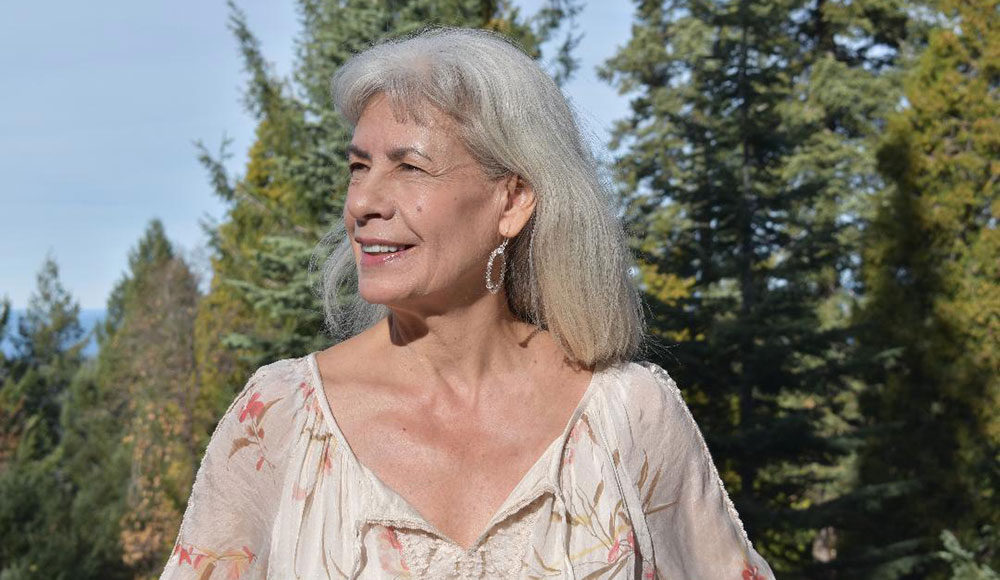I am talking with Rita Rivera, a longtime figure on the Santa Cruz wellness scene, about posture.
We agree that among other things, posture—or the way we hold our bodies—is a form of communication. Someone walks toward us with open arms and we can tell they’re happy to see us. Slumped shoulders or crossed arms—maybe not so much.
Clearly our emotions affect our posture, but can posture affect emotions?Can, as one study famously suggests, a smile forced by holding a pencil between your lips make you happy, even if the expression is emotionally devoid?
This conversation with Rivera was inspired by a recent article suggesting that yes, it can. The author, clinical psychologist Joseph Wielgosz, describes his studies and the two-way relationship between posture and stress.
Rivera has been teaching posture health for decades. She recalls taking her first Alexander Technique class in New York City, where she was working as a professional ballet dancer. “So, here I was spending four or five hours a day training in pointe shoes, and it really builds up a lot of stress and tension in your body,” Rivera recalls. But she wasn’t in pain and looking for treatment; instead, she went because her boyfriend at the time had paid for a session he couldn’t use.
“I was blown away by the experience,” she says. “At first I didn’t know what I was getting into; it’s very subtle work. The bottom line is it helps you develop kinesthetic awareness.”
I can relate. During my speaking engagements I’ll often stop to ask audience members to notice their posture. There are always rustles and whispers as people reposition and sit up straight.
Rivera says, “Most of us are very unconscious of our posture whether on the phone or computer—really, whatever activity you’re doing. We tend not to notice unless we’re in pain, right? When we’re in pain, we’ll pay attention.”
Rivera describes a typical two-part Alexander Technique session, which includes working in a chair and then on a mat or massage table: “It’s a very gentle, hands-on technique with a focus on breathing, because that is critical to get someone really present in their body, and to access the parasympathetic nervous system, slow their mind down.”
After that first session in New York, she says, “I realized how much tension I was working with at the ballet bar. It really changed my work habits tremendously, and so when I moved to Northern California in 1983 I did the three-year [Alexander] training here and started teaching.”
Today clients see Rivera at her Santa Cruz clinic for reasons that span physical and emotional pain and recovery from injury. “You develop bad habits because you’re protecting the injured part of the body. So I help clients stay balanced as best they can while they’re in that process of healing,” she says.
“What if you have a job where you’re sitting at a desk all day long?” I ask “Is sitting still the new smoking?”
This question has come up often enough to inspire Rivera to develop “Your Brilliant Back,” a 28-day guided video series to support posture change.
She says “a lot of back pain is related to posture and depending on what people do in their lives. Both too little movement and too much physical exertion can create stress in the back.
“Think about people who are on their computers or driving, neck strained or hunched forward. Developing awareness around your posture is essential for a wellness plan. Because as we age, our posture doesn’t automatically get better. We follow a trajectory of the patterns that have been set up in the body,” she says.
“So if you’re in a chronically stressed state, and unconscious about the way you’re using your body, as you age, you’re going to follow that trajectory,” she cautions. “That’s why I think it’s so essential to pay attention to good postural use.”
In the end, posture is more than just physical alignment—it’s a reflection of our overall well-being. By embracing a few basic principles, we can feel better physically, and at the same time build emotional resilience. As Rita Rivera reminds us, paying attention to how we carry ourselves can have profound effects on both our bodies and minds. So stand tall, breathe deeply, and let the connection between body and mind guide you toward a healthier, more balanced life.
Learn more about the Alexander Technique at RitaRivera.com.













